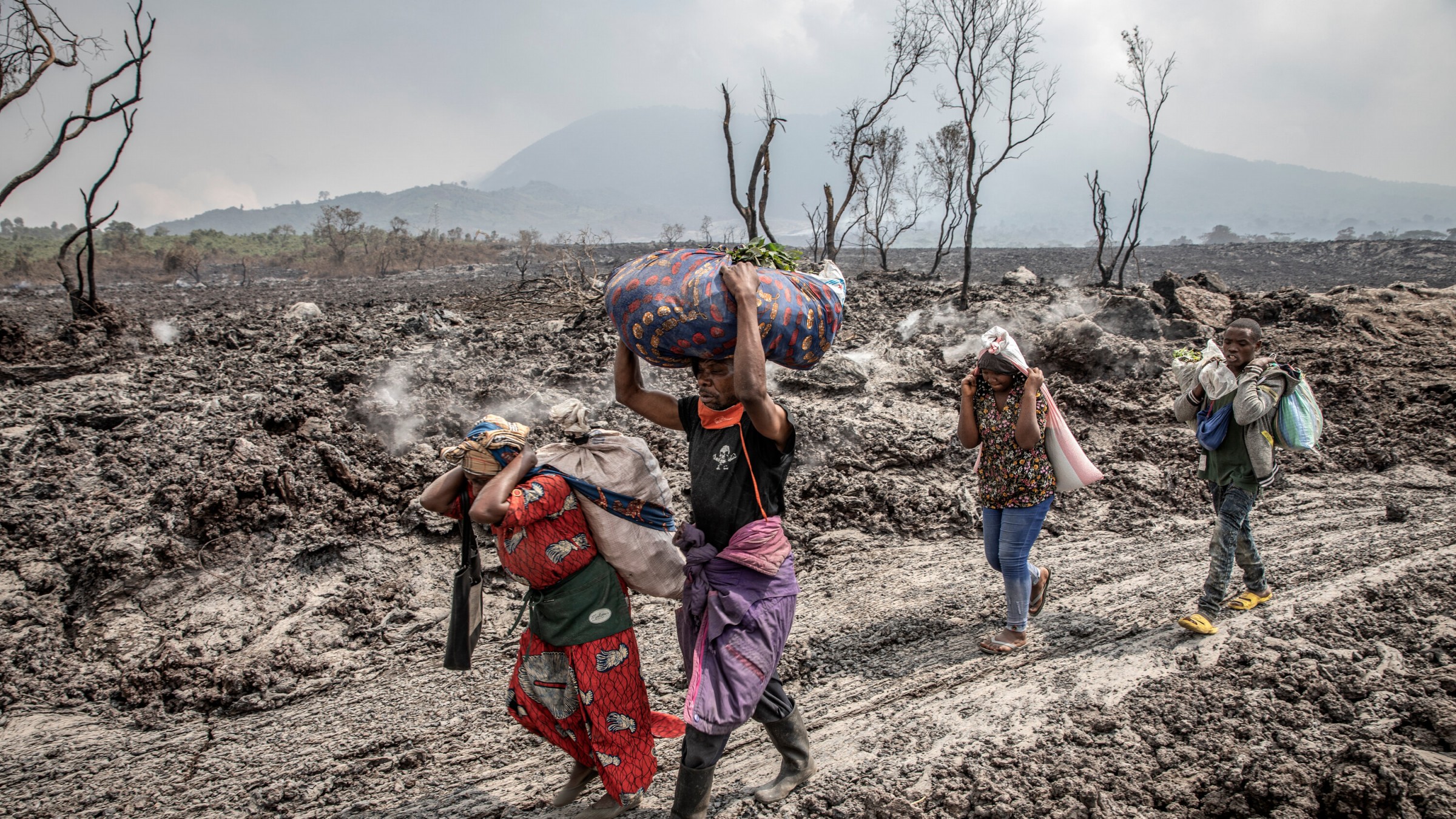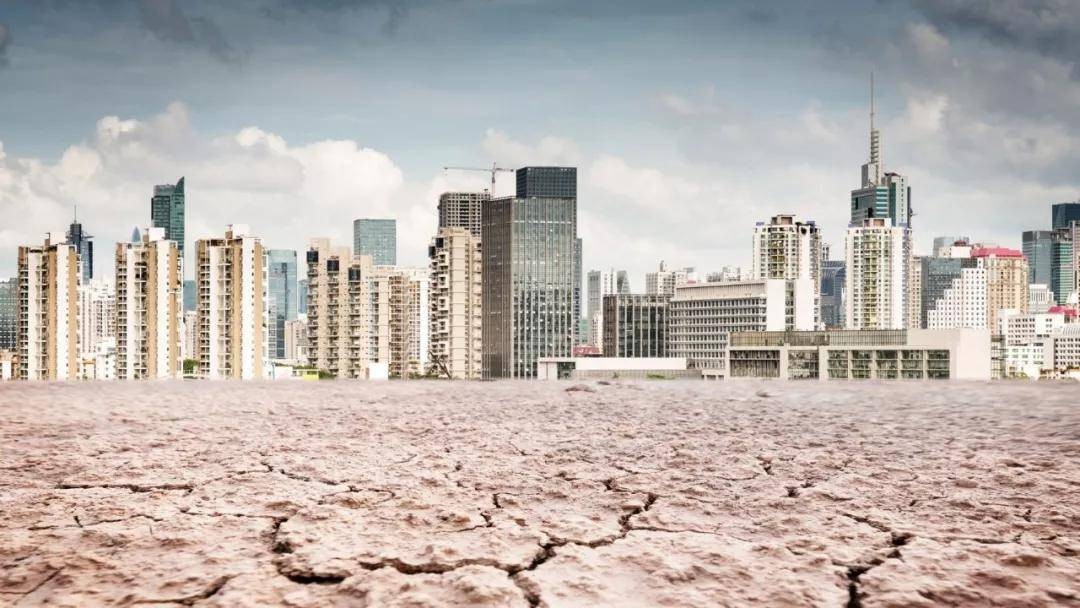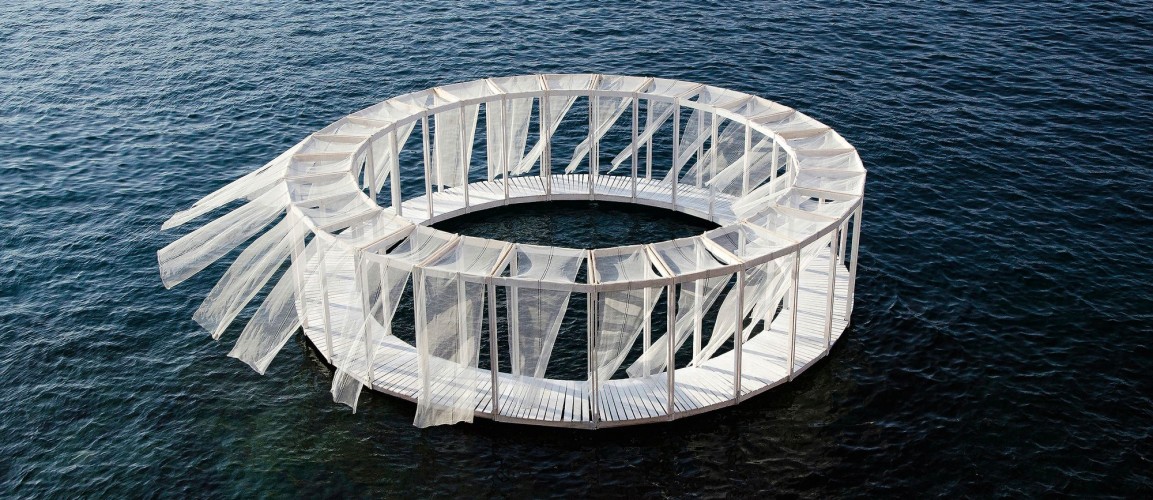Οικολογία, γυναικεία χειραφέτηση και οι στόχοι για ένα καλύτερο μέλλον
DS.WRITER:
Ιωακειμίδου Χριστίνα
Πηγή Κεντρικής Εικόνας: teenvogue.com
Η σύνδεση της γυναίκας με τη φύση
Κατά τη διάρκεια της ανθρώπινης ιστορίας, η θέση της γυναίκας δεν ήταν πάντα η ίδια. Οι πρώτες ανθρώπινες κοινωνίες, όπως μαρτυρούν τα αρχαιολογικά κατάλοιπα αλλά και πολλοί θεωρητικοί, ήταν μητριαρχικές. Στον Έριχ Φρομ διαβάζουμε πως, δίκαια η Γυναίκα θεωρούνταν ως η ανώτερη αρχή του προϊστορικού κόσμου, τόσο ιεραρχικά όσο και ιδεολογικά-θρησκευτικά, συνδέοντας τη θέση της με διάφορες κοινωνικές πρακτικές. Η γυναίκα, ως θεότητα, είναι συνδεδεμένη με τη γη και τον σεβασμό σε αυτήν, ενώ στοχεύει και στη διατήρηση της αγάπης και της ισότητας όλων, αφού θεωρείται η Μητέρα όλων. Με αυτό τον τρόπο καταλαβαίνουμε ότι ο δεσμός αίματος, που αποτελούσε και τον πυρήνα του μητριαρχικού κόσμου, συνδέεται άρρηκτα με την ισότητα.
Με τη σταδιακή απαγκίστρωση, όμως, από την γη, η ιεραρχία των κοινωνιών αλλάζει. Ο Φρομ επιπλέον υποστηρίζει, ότι οι νέες ηθικές αρχές και η προσκόλληση στην προτεραιότητα του Ορθολογισμού και της εξουσίας, οδήγησαν στην απομόνωση των γυναικών και στη δημιουργία μιας περισσότερο πατριαρχικής, κοινωνικά, δομής, όπου οι άνδρες είχαν, ως επί το πλείστον, τον λόγο για όλες τις ανθρώπινες δραστηριότητες.
Σχετίζεται η πατριαρχία με την περιβαλλοντική επιδείνωση;
Αυτή η αλλαγή, κατά τον Φρομ, αποτέλεσε και την τομή στην ιστορία της θέσης της γυναίκας, αφού, από τώρα και στο εξής, αυτή θα είναι εγκλωβισμένη σε μία νέα, κοινωνικά περιορισμένη ζωή. Αυτός ο περιορισμός, εκτός της μεταφορικής του σημασίας, για πολλές γυναίκες κυρίως των αναπτυσσόμενων χωρών, είναι και ρεαλιστικός, καθώς ανάγεται και στον χώρο όπου εκείνες είναι επιτρεπτό να κινούνται.
Συνέπεια αυτής της υφιστάμενης ως και στις μέρες μας κατάστασης, είναι η σταδιακή απομάκρυνση από τη φύση, ή ακόμα, σε πολλές περιπτώσεις, η θυσία των φυσικών πόρων στον βωμό του άκρατου ορθολογιστικού τρόπου σκέψης, που έχει κατά βάση συνδεθεί με την επικράτηση της πατριαρχίας. Φυσικά, η χρησιμοποίηση των περιβαλλοντικών αγαθών και η προσαρμογή τους στις ανθρώπινες ανάγκες, μέσω της εργαλειοποίησής τους, οδηγεί στην κατασπατάλησή τους και τελικά στην περιβαλλοντική καταστροφή. Έτσι, από την οικουμενικότητα και τον σεβασμό της φύσης, περνάμε στην εκμετάλλευση αυτής, και εν συνεχεία, μετά από μακραίωνες και περίπλοκες διαδικασίες, καταλήγουμε στον ανθρωποκεντρισμό και την ανάπτυξη των πρώτων καπιταλιστικών κοινωνιών.
Σήμερα, οι επιπτώσεις της περιβαλλοντικής εργαλειοποίησης είναι περισσότερο εμφανείς σε χώρες του λεγόμενου Τρίτου κόσμου, όπου η εξάρτηση από τη γη, μέσω της γεωργίας, είναι συνήθης τόσο στον οικονομικό τομέα όσο και στην καθημερινή ζωή των κατοίκων. Ωστόσο, σε αυτές τις χώρες, όπως έχει ήδη ειπωθεί, οι έμφυλες διακρίσεις είναι κυρίαρχες. Ακριβώς αυτή η πατριαρχική δομή αυτών των κοινωνιών και η υποβαθμισμένη θέση της γυναίκας διαφαίνονται και από τα ποσοστά που έρχονται στο φως της δημοσιότητας, μετά από κάποια περιβαλλοντική καταστροφή. Για παράδειγμα, σύμφωνα με πληροφορίες των Ηνωμένων Εθνών, οι γυναίκες κινδυνεύουν δεκατέσσερις φορές περισσότερο από τους άνδρες, σε περίπτωση φυσικής καταστροφής. Ο λόγος πίσω από αυτό το ποσοστό εντοπίζεται στον περιορισμό των γυναικών μέσα σε κλειστούς χώρους, χωρίς εξόδους διαφυγής. Επιπλέον, η ανυδρία αναγκάζει πολλά κορίτσια και νεαρές γυναίκες, κυρίως σε χώρες του αναπτυσσόμενου κόσμου, να περπατούν περισσότερο με σκοπό να βρουν άλλες πηγές νερού, απομακρυσμένες από τις περιοχές της μόνιμης κατοικίας τους. Ακόμα, το 80 τοις εκατό του πληθυσμού που αναγκάζεται να μετακινηθεί εξαιτίας κάποιας καταστροφής, είναι γυναίκες. Επιπλέον, και με βάση τις ίδιες έρευνες, οι γυναίκες πλήττονται και οικονομικά, αφού η απώλεια της οικίας και η περιορισμένη πρόσβαση στην αγορά εργασίας έχουν ως επακόλουθο τη σταδιακή φτωχοποίησή τους.

Πηγή εικόνας: nytimes.com
Ωστόσο, αυτή η κοινωνικοοικονομική εξέλιξη εξακολουθεί να πλήττει και τις δυτικές κοινωνίες, επιβάλλοντας την ταύτιση των βιολογικών φύλων με μία συγκεκριμένη κοινωνική συμπεριφορά. Ένα παράδειγμα αυτού του διαχωρισμού εντοπίζεται στη σημασία του όρου «men-environmentally friendly». Ο όρος, στην έννοια του οποίου είναι εμφανής μια χροιά τοξικής αρρενωπότητας, διαχωρίζει εμφανώς τις δραστηριότητες των ανδρών που σχετίζονται με τη φιλική προς το περιβάλλον συμπεριφορά, διαφοροποιώντας το τι είναι κοινωνικά επιτρεπτό για τον άνδρα να κάνει, ούτως ώστε να συμβάλλει στην προστασία του περιβάλλοντος. Αυτή η, κατά πολλές περιπτώσεις, αδιαφορία των ανδρών για θέματα οικολογίας και η ταύτιση αυτών με την γυναίκα, είναι φανερή και από διάφορες στατιστικές, οι οποίες παρατίθενται στο τέλος του άρθρου. Από αυτές προκύπτει ότι οι γυναίκες ένθερμα υποστηρίζουν την υιοθέτηση πιο οικολογικών συμπεριφορών, ενώ είναι πιο πρόθυμες να χρησιμοποιούν ηλεκτρικά αυτοκίνητα, βοηθώντας με αυτό τον τρόπο στον περιορισμό της εκπομπής επιβλαβών για το περιβάλλον αερίων. Επιπλέον, οι γυναίκες εκφράζουν μία περισσότερο φιλική προς το περιβάλλον κατεύθυνση και στην πολιτική, αφού το μεγαλύτερο ποσοστό των γυναικείων ψήφων εντοπίζεται σε κόμματα, των οποίων οι θέσεις τείνουν να είναι «πρασινότερες». Δεν είναι τυχαίο άλλωστε, ότι οι κυβερνήσεις με περισσότερες γυναίκες προωθούν νομοσχέδια που επικεντρώνονται στην περιβαλλοντική προστασία. Αυτό επιβεβαιώνουν και οι πρόσφατες εκλογές στη Γερμανία, όπου, σύμφωνα με στοιχεία της DW, το κόμμα των Grüne είχε συγκεντρώσει τις περισσότερες ψήφους των γυναικών. Την ίδια στιγμή, οι αντρικές ψήφοι συγκεντρώνονται σε συντηρητικά κόμματα, των οποίων η πολιτική ατζέντα δεν περιλαμβάνει περιβαλλοντικά θέματα. Τέλος, ίσως αξίζει να σημειωθεί πως οι καμπάνιες περί cruelty-free συμπεριφοράς μεγάλων βιομηχανιών, αφορούν προϊόντα που προορίζονται κατά βάση για το γυναικείο καταναλωτικό κοινό.
Όμως, παρά τις επικρατούσες συνθήκες και την παραγκώνιση, οι γυναίκες σταδιακά έχουν καταφέρει, κυρίως από τα μέσα του 20ού αιώνα, να αποκτήσουν τη δική τους φωνή. Αυτό φυσικά δεν θα είχε επιτευχθεί, χωρίς την ανάπτυξη των διαφόρων φεμινιστικών κινημάτων και τη σύνδεση της Οικολογίας και του Φεμινισμού. Το τελευταίο μάλιστα πήρε μορφή μέσω του κινήματος της Φεμινιστικής πολιτικής Οικολογίας (Feminist political Ecology), που συνεχίζει να έχει μία έντονη κοινωνικοπολιτική δραστηριότητα. Το ερώτημα, ωστόσο, που προκύπτει, είναι, τι θα άλλαζε αν οι γυναίκες είχαν μεγαλύτερη εκπροσώπηση στη λήψη αποφάσεων που αφορούν το περιβάλλον; Και το κυριότερο, πώς οι γυναίκες designers και αρχιτέκτονες έχουν συμβάλει και εξακολουθούν να συμβάλλουν στη διαμόρφωση μιας διαφορετικής οπτικής στον τρόπο του αστικού σχεδιασμου και του design;
Το what if που πλανάται
Τομή για την άποψη σχετικά με τον οικιστικό σχεδιασμό και το design των μεγαλουπόλεων των μέσων του προηγούμενου αιώνα, αποτέλεσε η Jane Jacobs και το σύγγραμμά της «The Death and Life of Great American Cities» (α’ έκδοση, 1961). Σε αυτό, η Jacobs τάσσεται υπέρ ενός νέου χωροταξικού σχεδιασμού με επίκεντρο τις ανάγκες των κατοίκων, προσεγγίζοντας την πόλη όχι ως κάτι στατικό, αλλά σαν ένα οικοσύστημα που αλλάζει και πρέπει να λειτουργεί αρμονικά. Οι προτάσεις της για μεικτές ζώνες κατοίκησης, όπου όλοι οι τομείς της καθημερινότητας θα συνυπάρχουν, αποτέλεσε την πρώτη προσπάθεια αποτίναξης των «συνόρων» ανάμεσα στη ζωή του σπιτιού, όπου κυρίαρχη ήταν η γυναίκα-νοικοκυρά, και το κέντρο των πόλεων, το οποίο θεωρούνταν ένας καθαρά ανδρικός χώρος.
Άλλες απόψεις για τον σχεδιασμό των χώρων που μας περιβάλλουν εκφράστηκαν στα μέσα του 1980 από την Wendy Davis, συνιδρύτρια του Women’s Design Service, της πρώτης φεμινιστικής χωροταξικής-τοπογραφικής ομάδας του Ηνωμένου Βασιλείου. Στόχος τόσο της συγκεκριμένης ομάδας όσο και πολλών γυναικών designers και αρχιτεκτόνων ήταν και είναι η επανένταξη της γυναίκας στην πόλη, ακολουθώντας τις απόψεις της Jacobs περί συνοικιών με μεικτή χρήση, ενώ ύψιστη προσπάθεια του σχεδιασμού θα πρέπει να είναι η απεριόριστη και ανεμπόδιστη πρόσβαση όλων των ατόμων (ανεξαρτήτως φύλου, ηλικίας κτλ.) σε όλους τους αστικούς χώρους. Μόνο έτσι, κατά την Caroline Moser, η γυναίκα θα επανενταχθεί σε όλους τους κοινωνικούς τομείς, ενισχύοντας τη θέση της και περιορίζοντας τις πατριαρχικές πρακτικές.
Η υπόθεση του τι θα άλλαζε αν οι γυναίκες συμμετείχαν σε αποφάσεις που αφορούν το περιβάλλον, μάλλον θα μπορούσε να απαντηθεί και με την παρατήρηση των γυναικείων δράσεων σε πολλές πληγείσες περιοχές. Στοιχεία αντίστοιχων μελετών έχουν δείξει ότι η επανασύσταση οικισμών βάσει των εμπειρικών παρατηρήσεων των γυναικών με συνεχή τριβή με τη φύση, και η ολιστική προσέγγισή τους στο πρόβλημα, οδηγούν στο να δίνονται πρακτικές λύσεις στον σχεδιασμό των οικιστικών χώρων. Μια από αυτές τις μελέτες αφορά την παρατήρηση οικιών στην πόλη Dhaka του Μπαγκλαντές. Σύμφωνα με την ερευνήτρια Huraera Jabeen, οι προτάσεις των ντόπιων γυναικών επικεντρώνονταν σε δωμάτια με επαρκή φωτισμό και εξαερισμό, αλλά και προστατευμένα από τις αλλαγές της θερμοκρασίας. Επιπλέον, οι γυναίκες-ένοικοι των σπιτιών έδωσαν ιδιαίτερη σημασία στον σχεδιασμό του εσωτερικού τής οικίας τους αλλά και του συνοικισμού, ούτως ώστε αυτή να είναι εργονομική για τις καθημερινές τους εργασίες, παρέχοντάς τους ταυτόχρονα ένα υγιεινό περιβάλλον.

Πηγή εικόνας: dezeen.com
Το ίδιο αποτελεσματικές φαίνεται να είναι οι γυναικείες γενικά προσπάθειες -σύμφωνα με την Christiana Figueres (Executive Secretary των Ηνωμένων Εθνών)- και στον αγροτικό τομέα, καθώς, εάν αυτές είχαν ίσες ευκαιρίες χρηματοδότησης των μικρών εκτάσεών τους με τους άντρες, υπολογίζεται ότι θα μπορούσαν να παράγουν 20 με 30 τοις εκατό περισσότερα τρόφιμα, με λιγότερο όμως περιβαλλοντικό κόστος, μειώνοντας την εκπομπή ρύπων κατά 20 δισεκατομμύρια μέχρι το 2050.
Η κληρονομιά που άφησαν τα φεμινιστικά κινήματα του ’80, όπως η φεμινιστική πολιτική Οικολογία (Feminist political Ecology), είναι εμφανής και σήμερα. Πολλές οργανώσεις, όπως οι Green Belt movement της φεμινίστριας ακτιβίστριας Wangari Maathai και οι 350.org της May Boeve, προσφέρουν με τη δουλειά τους φωνή στις γυναίκες και ενισχύουν τις προσπάθειες προστασίας του περιβάλλοντος, ενώ, παράλληλα, η Greta Thunberg είναι το παράδειγμα της συνέχισης αυτής της προσπάθειας και στις νεότερες γενιές. Επιπλέον, ο μη-κερδοσκοπικός οργανισμός Femmes et Ville ιδρύθηκε το 2002, με σκοπό να προωθήσει τα ζητήματα ισότητας των φύλων και ένταξης των γυναικών σε ένα ασφαλές αστικό -και όχι μόνο- περιβάλλον. Τέλος, στον χώρο του πολεοδομικού και αρχιτεκτονικού σχεδιασμού στην Ελλάδα, συναντάμε την ομάδα Urbana, της οποίας το έργο προσανατολίζεται στην αντιμετώπιση των ανισοτήτων στο αστικό περιβάλλον, επικεντρώνοντας τη δράση του στις αρχές της συμπερίληψης αλλά και του συμμετοχικού σχεδιασμού.
Πηγές για περαιτέρω ανάγνωση
- United Nations. WomenWatch: Women, gender equality and climate change. United Nations. Από: https://www.un.org/womenwatch/feature/climate_change/.
- Guardian News and Media. (2014, December 5). If women built cities, what would our urban landscape look like? The Guardian. Από: https://www.theguardian.com/cities/2014/dec/05/if-women-built-cities-what-would-our-urban-landscape-look-like.
- Patriarchy is killing our planet - women alone can save her. The Ecologist. (2017, November 17). Από: https://theecologist.org/2015/mar/13/patriarchy-killing-our-planet-women-alone-can-save-her.
- Brough, A. R. (2017, December 26). Men Resist Green Behavior as unmanly. Scientific American. Από: https://www.scientificamerican.com/article/men-resist-green-behavior-as-unmanly/.
- Man-made disaster: How patriarchy is ruining the planet. Do The Green Thing. (2019). Από: https://dothegreenthing.com/issue/man-made-disaster-how-patriarchy-is-ruining-the-planet/.
- Jabeen, H. (2014). Adapting the built environment: the role of gender in shaping vulnerability and resilience to climate extremes in Dhaka. Environment and Urbanization, 26(1), 147–165. https://doi.org/10.1177/0956247813517851.
- Rocheleau, D.E., Thomas-Slayter, B.P., & Wangari, E. (1996). Gender and Environment: A feminist political ecology perspective.
- Beauvoir, S. . (1989). The second sex. New York: Vintage Books.
- Öcalan A. (2017). Απελευθερώνοντας τη ζωή: Η Γυναικεία Επανάσταση. Αθήνα: Στάσει Εκπίπτοντες.
- Φρομ, Ε. (1975). Η Ξεχασμένη γλώσσα. Αθήνα: Μπουκουμάνης.
- Περισσότερα για την Urbana στο https://urbana.gr/en/ και στο https://tomov.gr/2021/11/06/urbana-pos-tha-mia-poli-schediasmeni-gynaikes/?fbclid=IwAR3pKcrWsU0aSyrSf9L_iANHR7TwMxRkLQ70tgnpPXA47EQyZd6Jjjf22Ug.
- Περισσότερα για το Femmes et Ville στο https://femmesetvilles.org/.






.jpg)
.jpg)